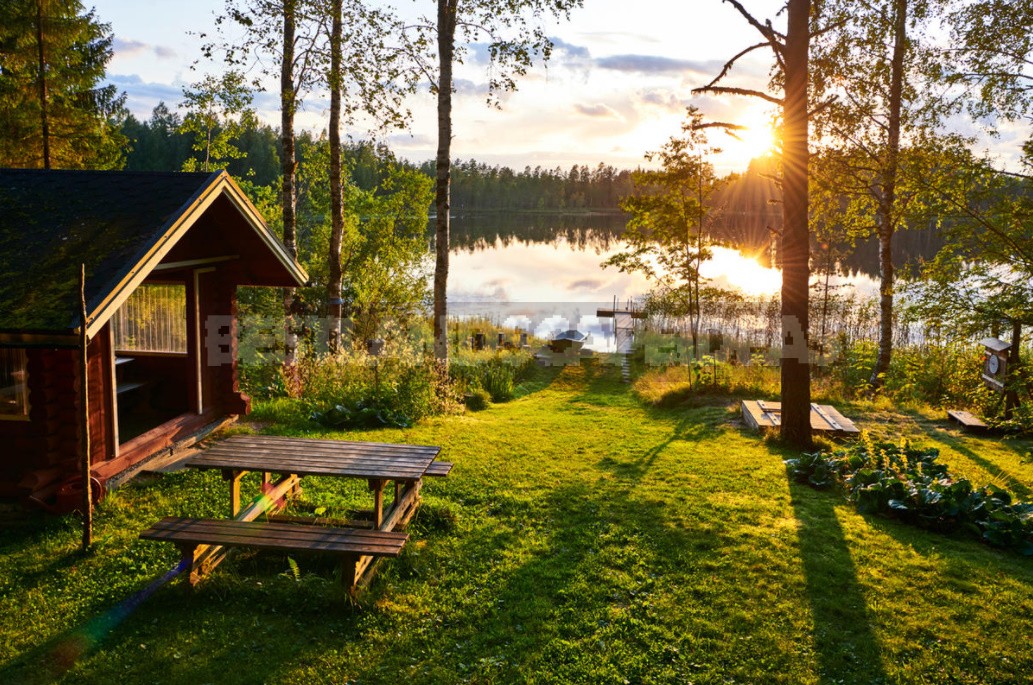
If there is a pond next to the bathhouse, there should be no problems with the water supply. The main thing is to properly organize the water supply.
Water intake scheme
When developing my mini-project, I pursued three main goals: reliability, simplicity and convenience. At the initial stage, I drew a diagram of the water supply. It works as follows (Fig. 1).
The pump N1, which is switched on by the start-up unit BP1, draws water from the pond and supplies water through the ball valve KS1 to the coarse filter F1. Then the water passes through the meter and is fed to the tee, where, passing through the KS2 and KS3 taps, it reaches the final goal. The word “purpose” means a hot water tank and a cold water supply point for household needs. Why does it follow two branches?

The fact is that the water heating tank is large and installed high and stationary, and running with a hose is not very convenient, especially when you heat the bath. The KS1 tap only serves to leave the system under pressure, and when the water is pumped again, do not wait for the pump to collect water from the reservoir.
The filter F1 is used to reduce contamination of the supplied water in case the water intake at the pump N1 turns out to be lower, and buries into the muddy bottom of the shore. The SV1 meter is an unnecessary component of the scheme and was supplied only to determine the cubic capacity of the hot water tank.
Design of the pump start-up unit
In order to protect the pump from unwanted overloads and thus increase its service life, the pump start-up unit was designed (Fig. 2).
The unit is activated by the lever of the automatic switch AB1, as indicated by the indicator light L1 that lights up. In this state, the starting unit is in standby mode. When the “START” button of the PK1 push-button post is pressed, the built-in light bulb lights up, and the supply voltage is applied to the contactor coil KM1. Contacts 5L3 and T3/6 are closed and when the “START” button is pressed, they continue to supply power to the contactor coil KM1. In other words, the contactor coil is blocked.
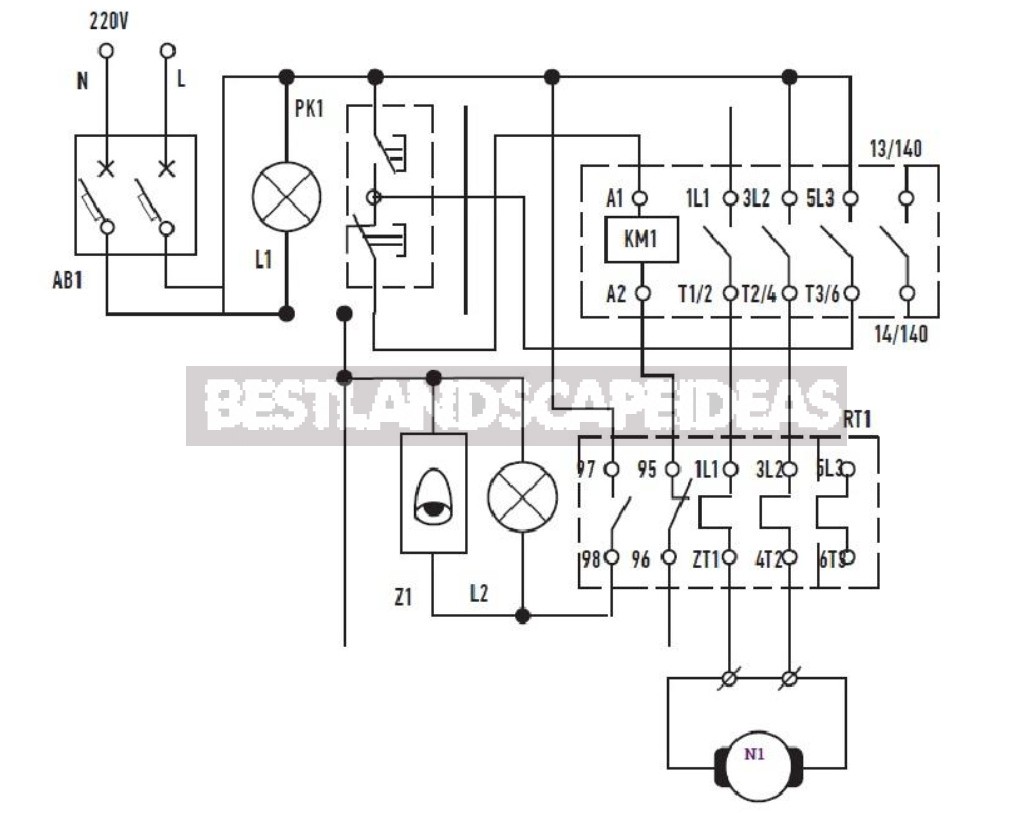
The voltage through the contacts of the contactor KM1 and the thermal relay RT1 is supplied to the pump motor N1, and it starts its work. There are three degrees of protection provided here. If this is a short circuit or an excess of the maximum current, the circuit breaker AB1 will work. After some time, the starting lever of the automatic switch can be turned on again.
If the rated current of the pump is exceeded for a long time, the protection will work thanks to the RT1 thermal relay. This happens as follows. If the pump is exposed to an increased rated current for a long time, the bimetallic fuse of the RT1 thermal relay is triggered. The main pair of contacts 1L1–2T1 and 3L2–4T2 opens. In addition, the additional contacts of the relay RT1 95-96 are opened, which break the power circuit of the contactor coil KM1. The pump motor is stopped.
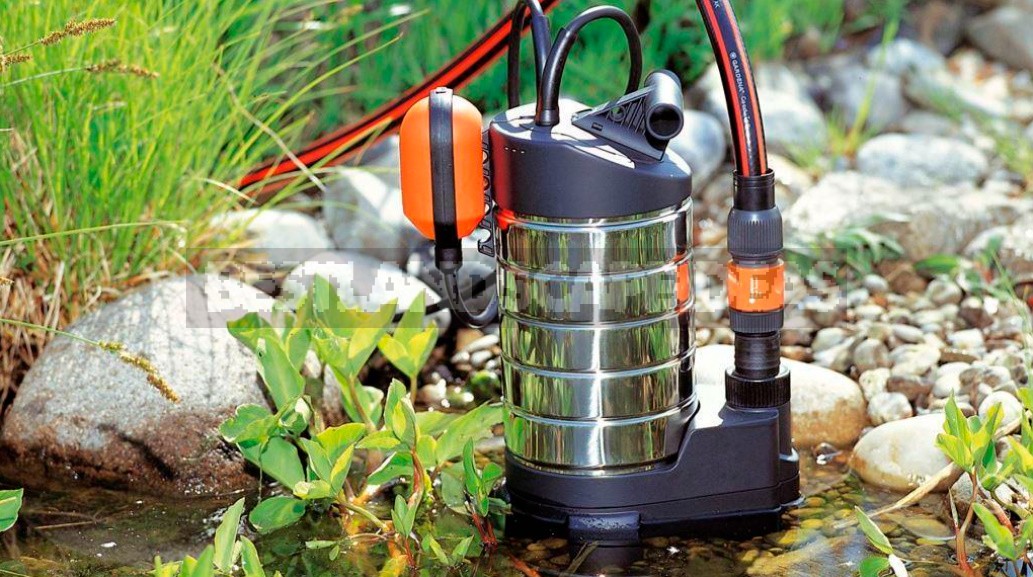
Together with these contacts, additional contacts 97-98 are closed at the thermal relay, which indicate an emergency situation, and include an audible alert (bell Z1) and a visual one-lamp L2. The reset occurs independently after 1-3 minutes, if the “AUTO” position is set on the front panel of the thermal relay (automatic).
In the case of setting the “MANUAL” (manual mode), human intervention is necessary. At the same time, Z1 will be enabled until it is manually disabled. In this case, the reset is performed by pressing the STOP button on the front panel of the RT1 thermal relay. And the very situation of exceeding the rated current consumption can be simulated (tested) by pressing the TEST button on the front panel of the thermal relay.
And more. If the shutdowns were repeated two, three or more times, then the pump engine is operating in critical mode, which means that it needs a technical inspection or repair.
Laying of the pipeline
Having determined the points of water distribution in the washing room, I started installing metal-plastic pipes. I screwed the clips along the line of the future route with a step of 0.3 m. I installed the fittings (corners, tee, adapters) at the ends of the pipes marked in advance in place. I screwed the 1/2 ” ball valves to the metal-plastic corners, fixed the metal-plastic pipes to the fastening clips before that. I attached a coarse water filter to the meter, then installing this node in the pipe line.
Since the door to the washing room opens precisely in the direction of communications, it was necessary to install a limiter for opening the door in the form of a bar. Then, having drilled a hole in the joint of the logs of the bathhouse wall, I passed a supply pipe through it. I put a 1/2 ” ball valve. Next, I installed a box with a pump start-up unit pre-installed in it according to our electrical scheme (photo 5). Photo 1 shows how it looks with the box lid open.
Having drilled another hole in the facade of the bathhouse wall between the logs, I stretched the power supply of the pump with the installation of a dust-and-moisture-proof outlet at the end (photo 2). The degree of protection of the outlet should be at least IP44, and better-IP55.
Due to the fact that there are no electrical mounting boxes in the washing bath, I decided to connect the pump control start-up unit through a wire and a plug to a regular outlet (photo 3).
The first stage of the work is completed. The work related to the implementation of stationary engineering communications has been completed.

Preparation of the water supply system
To prevent the supply hose and the pump supply cable from being separated, I connected them into a single whole using plastic clamps (photo 4). This simple action creates additional convenience during operation, as well as when deploying and folding the water intake system.
I performed the design itself on a circle of foam with a diameter of about 1 m. The thickness of the foam is 10-15 cm. I made a hole in the middle of the circle. The diameter of its inner hole was chosen in such a way that the pump body could pass freely.
To attach it to the foam circle with the help of pins and nuts, M8 screwed two support bars of 60 x 60 mm with a length not exceeding the circumference of the circle. A bearing bar with the same cross-section and a length of 40 cm was screwed to these two support bars with the help of self-tapping screws. The bearing bar itself was attached to the support bars with an offset relative to the center of the circle (photo 5). I did this for the convenience of dismantling the pump from the circle window.

Then I screwed the pump body with a stainless steel wire to the bearing bar with a self-tapping screw. In order for the pump supply hose not to bend when the water intake system drifts over the pond surface, it was necessary to attach a piece of bent metal-plastic pipe of a suitable diameter to the outlet pipe (photo 6). In order not to fix the tube rigidly on the bar, I screwed it with a perforated steel tape.
Next, I connected the supply hose with the help of worm clamps (photo 7). The water intake system is ready. To connect the ball valve fitting to the supply hose, I heated the latter with a gas burner (photo 8) and, easily putting it on the fitting, tightened it with a yoke.
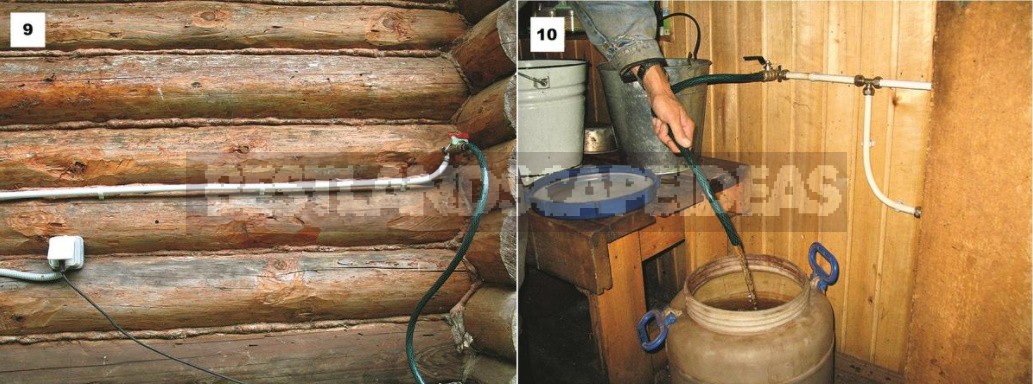
I connect the plug of the pump’s supply cable to the outlet on the facade of the bath (photo 9) — and the water supply system is ready for the first start. I open the faucet, turn it on. A short delay, and-lo and behold — it happened! The water obediently and unhurriedly ran out of the tap! (Photo 10).
So, we have considered how you can organize the water supply of a bath if it is located near a reservoir. Of course, neither the well nor the well are needed in this case. The only drawback is the need to conclude a water use agreement, which must be signed by representatives of local authorities.

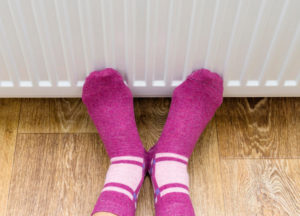


Leave a Reply